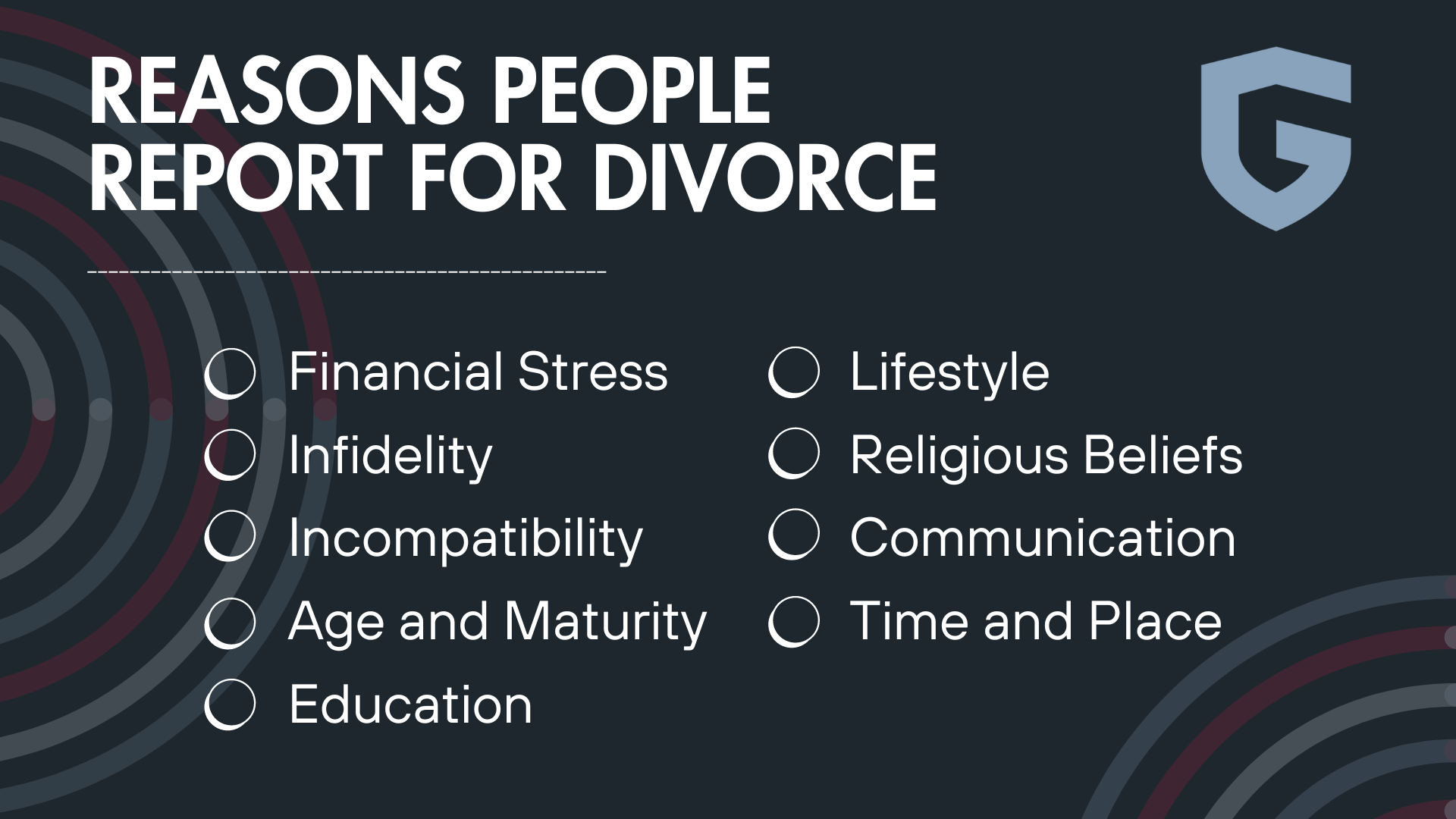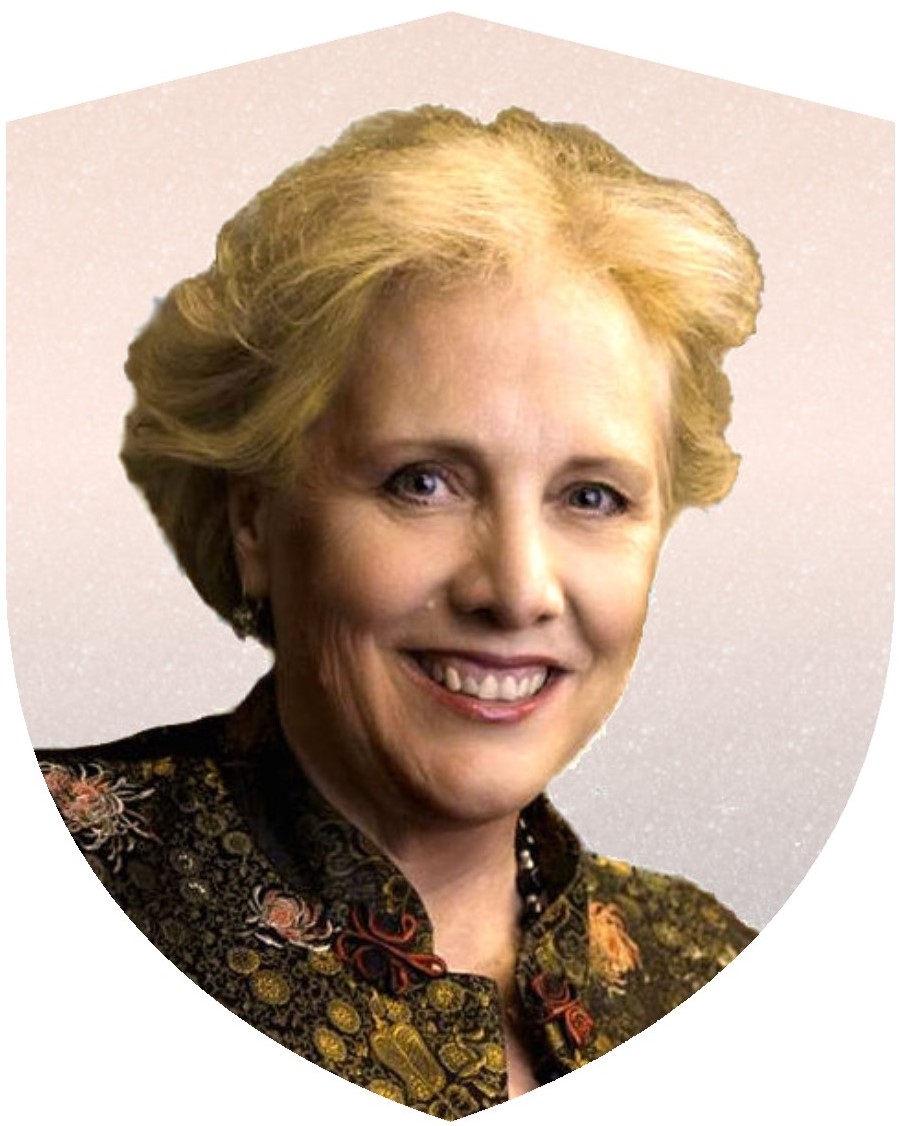 As any law firm will tell you, case law is not permanent. The constant influx of cases with varying considerations and outcomes can cause a change in the way the courts approach legal decisions and even set new precedents. Arizona divorce laws are no different – in fact, multiple new laws have gone into effect within the past decade. With these new laws come significant changes in legal proceedings, including deadline changes, new requirements, and more. It’s very important to remain aware of these changes to ensure a positive outcome in your divorce case. Divorce laws can be particularly difficult to keep abreast of since divorce encompasses several different decisions, such as child custody, child support, spousal maintenance, property division, and more. Representation by an experienced divorce attorney who understands 2024 divorce law in Arizona is key to a successful divorce settlement.
As any law firm will tell you, case law is not permanent. The constant influx of cases with varying considerations and outcomes can cause a change in the way the courts approach legal decisions and even set new precedents. Arizona divorce laws are no different – in fact, multiple new laws have gone into effect within the past decade. With these new laws come significant changes in legal proceedings, including deadline changes, new requirements, and more. It’s very important to remain aware of these changes to ensure a positive outcome in your divorce case. Divorce laws can be particularly difficult to keep abreast of since divorce encompasses several different decisions, such as child custody, child support, spousal maintenance, property division, and more. Representation by an experienced divorce attorney who understands 2024 divorce law in Arizona is key to a successful divorce settlement.
Current Arizona Divorce Statistics and Trends
According to available data, the divorce rate in Arizona is 9.79% of the total population each year. This is a significant increase from the previously reported rate. This increase may be attributed to a multitude of factors, including a lack of understanding of the commitment marriage requires, rushed marriages, and the acceptance of divorce. In addition, due to changes in divorce laws, divorce is more accessible in the state. Arizona is one of the fastest-growing states in the US, and with this increased population comes the potential for changing divorce rates. It’s important to recognize that divorce statistics can be analyzed in many ways. Instead of a percentage of the total population, it may be more useful to assess divorces per every thousand people or compare them to marriages in the state. Approximately 5.4 of every 1000 Arizonans marry each year, and 2.3 of every 1000 people divorce.
How Does Length of Marriage and Number of Marriages Affect Divorce Rate?
While Arizona has not recently compiled data regarding the average length of marriage, the average US marriage that ends in divorce lasts about eight years. However, divorce statistics in 2024 can change dramatically depending on how many marriages the people in question have had. First marriages are least likely to end in divorce, with rates from multiple studies ranging up to about 50%. Second marriages end in divorce around 60% of the time, with third marriages exceeding 70%.
Factors Influencing Divorce
Every relationship is different, and thus, so are the reasons people report for divorce.  One or more of these factors may be the impetus for choosing divorce in Arizona in 2024.
One or more of these factors may be the impetus for choosing divorce in Arizona in 2024.
- Financial Stress – According to a study cited by World Population Review, 22% of respondents mentioned financial stress as a primary reason for divorce. In many cases, money issues are a factor that can heighten the tension in a relationship.
- Infidelity – Unfortunately, infidelity can severely erode the trust necessary to maintain a marriage. The same study reported that 28% of people surveyed cited infidelity as a reason for divorce.
- Incompatibility – The top reason for divorce according to the previously cited survey is incompatibility. A couple’s perceived compatibility can be influenced by many factors, including those below.
- Age and Maturity – The average age of divorcing couples is 30. Married couples between the ages of 20 and 25 have a 60% chance of filing for divorce. Couples who wait until 25 to get married are 24% less likely to get divorced.
- Education – Generally speaking, couples who have attained a high level of education believe they have a better chance of remaining married.
- Lifestyle – Lifestyle can encompass many things. Couples who experience differences due to activity levels, substance use, and even hobbies can choose divorce.
- Religious Beliefs – Couples who have strong religious beliefs that are aligned with one another have a better chance of staying married. These couples are 14% less likely to file for divorce.
- Communication – Breakdowns in communication can be one of the biggest indicators of a divorce. Couples who fail to communicate properly may struggle to resolve conflicts that arise successfully. Failing to understand each other, resolve key issues, and maintain a healthy relationship are all issues that can arise from a lack of efficient communication.
- Time and Place – Divorces tend to spike in March and August of each year. In addition, southern and western states usually report higher marriage and divorce rates than northern and eastern states. As a southwestern state, it tracks that Arizona is well above the midline regarding divorce rates.
Demographic Insights
As has been the trend over recent years, middle-aged couples lead the way in terms of divorce rate. Younger couples are more likely to stay married. There are several reasons why middle-aged couples are more likely to get divorced. One reason could be the changing landscape of marriage and divorce in Arizona. Divorce laws in Arizona have changed over the years, making getting divorced easier and more acceptable. Several spouses who have been in long-standing and unhappy marriages have started to file for divorce. Many of the stereotypes surrounding divorce have been broken. Couples feel more free to divorce if their marriage is no longer working instead of trying to stick it out.
Divorce Rates by Age
The age of each spouse at the time they get married can be a leading indicator as to how long the marriage will last. The average age of divorcing couples is 46 for men and 44 for women. The chances of divorce increase over time as couples get older. With the changing cultural and legal landscape of marriage, there is a trend in couples waiting to get married. The average age of marriage for men is 31 and 29 for women. This is a noticeable increase from the average age of 29 for men and 27 for women in 2012. However, it is notable that the average age of marriage remains close to 30 for both genders, as fertility in women starts to decrease by age 30.
Divorce Rates by Profession
According to US Census Data collected by the Integrated Public Use Microdata Series and analyzed by Stacker, people in more lucrative careers divorce less often than people in lower-paying jobs. This may be attributed to a relative decrease in financial stress, better job satisfaction, improved life satisfaction, and more. However, pay is not the sole indicator of divorce rates, as general job stress, family separation, and other attributes can contribute to the divorce rate.  Analysts suggest that jobs with a stable pay rate, regular hours, limited travel expectations, safe working conditions, limited physical labor, and calm atmosphere can reduce stress and decrease divorce rate. Jobs with the opposite conditions – low pay, irregular hours, high travel demands, dangerous working conditions, physical labor expectations, and stressful environments – may experience increased divorce rates. The top ten professions with the highest divorce rates, major contributors, and their corresponding rates include:
Analysts suggest that jobs with a stable pay rate, regular hours, limited travel expectations, safe working conditions, limited physical labor, and calm atmosphere can reduce stress and decrease divorce rate. Jobs with the opposite conditions – low pay, irregular hours, high travel demands, dangerous working conditions, physical labor expectations, and stressful environments – may experience increased divorce rates. The top ten professions with the highest divorce rates, major contributors, and their corresponding rates include:
-
- Telemarketers (low average salary, 34% divorce rate)
- Furnace Operators (29% divorce rate)
- Acupuncturists (29% divorce rate)
- Bartenders (low average salary, 28% divorce rate)
- HAZMAT workers (dangerous working conditions, 28% divorce rate)
- Massage Therapists (27% divorce rate)
- Professional Sports Officials (26% divorce rate)
- Hospitality Clerks (low average salary, 26% divorce rate)
- USPS Workers (high stress, 26% divorce rate)
- Workplace Interviewers (moderately low average salary, 25% divorce rate)
Other notable jobs in the top 50 include nurses (21st), bus drivers (29th), flight attendants (31st), security guards (38th), substance abuse and mental health counselors (43rd), and waiters (47th).
Impact of Military Service on Marriages
The divorce rate of service members or veterans is higher than that of civilians who have never served. In addition, the divorce rate for female service members is 2.5 times higher than that of male service members.
The reality is that military marriages face a different set of challenges than civilian marriages may face, both before and after service is complete.
Young Marriages
It is not uncommon for couples with one spouse in the military to consider marriage sooner than civilians due to the marriage benefits offered. From healthcare benefits to a basic allowance for housing, some young adults find that the benefits offered to married service members are enticing. This may be why so many individuals in the military marry before the age of 25, much younger than the national average age of 31 for men and 29 for women.
Deployment and Family Separation
Financial Troubles
It is not uncommon for military couples to struggle to support themselves financially. The average financial well-being score of enlisted individuals is below the national average, and 1 in 4 military spouses report that they are food insecure, meaning that they are struggling to pay the bills and afford groceries for their household. This financial hardship can put a serious strain on a marriage.
Trauma, Stress, and Anxiety
The constant stress and intermittent trauma caused by military service can take a toll on individuals and marriages. 44% of military spouses have seen a counselor while they or their spouse was on active duty. Meanwhile, serious repercussions like traumatic brain injuries and post-traumatic stress disorder can wreak havoc on a marriage.
How Do Arizona Divorce Rates Compare to Other States?
Arizona currently ranks 19th among US states and territories in divorce rates. This rate is higher than the national average, which is just 9.2%. By comparison, Utah has a divorce rate of just 6.78%, while Maine has a rate of 11.84%.
- Maine
- Nevada
- West Virginia
- Florida
- New Mexico
- Utah
- New Jersey
- New York
- Hawaii
- North Dakota
Health, Lifestyle, and Divorce
Lifestyle choices can have a great impact on a marriage and the likelihood of divorce. The sad reality is that some marriages may end in divorce because of the strain placed on a spouse who has suddenly become a caretaker, though official research on the topic is neither recent nor conclusive. Other marriages end when partners find themselves incompatible due to differing lifestyle choices. Lifestyle choices that can impact marriage include:
Smoking
There are several studies that have been conducted on the relationship between cigarette smoking and marriage. The data reveals that the degree to which smoking affects the divorce rate appears to depend on the race and ethnicity of the spouses. In many cases, cigarette smoking can be a coping mechanism used to deal with stress or anxiety. If a couple is in an already tumultuous marriage, one spouse may turn to smoking as a means to cope. This can serve to make a tough situation worse.
Substance Use
Substance use, whether alcohol, prescription drug misuse, or street drug use, can begin as a means of coping with an already-fraught marriage, or it may be the cause of marital strife. Research indicates that roughly six million people are in marriages where one spouse is battling substance use disorder or addiction. The study indicated that SUD is responsible for ending 3% of all marriages in the US, and 6% of divorces list substance addiction as the main cause. Relationships in which one spouse struggles with addiction have a higher chance of ending in divorce. Substance addiction was noted as the 8th most commonly cited reason for divorce for men and the 3rd most for women.
Weight Gain
The relationship between marriage and weight gain is important to understand. When couples get married and move in together, they are already at an age where a slowing metabolism and weight gain are likely. However, gaining too much weight can be caused by unhealthy eating habits or lifestyle. While there is not much official data regarding weight gain and divorce, a driving factor behind incompatibility may be loss of attraction and/or weight gain. In addition, couples who participate in active hobbies together may simultaneously limit weight gain and improve compatibility.
Withholding Sex or Physical Affection
According to scientific research, affectionate touch is directly related to the degree of love felt between spouses. Physical intimacy and sex are distinguishing aspects of a marriage. To keep a marriage healthy and thriving, reaching a mutual understanding regarding physical affection is crucial.
Multiple Children
A study conducted in 2011 indicated that parents who give birth to twins as their first children were more likely to get divorced. The likelihood of divorce is even more prevalent for mothers who did not attend college compared to those mothers who did attend some college. Mothers who already have children and then give birth to twins or triplets are also at risk of becoming divorced.
The Role of Technology and Social Media in Divorce
The use of modern technology and its increasing usage can have serious implications for the divorce rate in Arizona. Still other spouses cite online affairs or active participation in online dating platforms as a primary reason for divorce. Online interactions are blamed for about a third of divorces that are initiated due to infidelity. Many divorcing spouses also mention unhealthy social media use, whether Facebook, Instagram, Twitter/X, Tiktok, or something else. as one of the reasons for divorce. Spending too much time on social media appears to reduce relationship satisfaction and effective communication, increasing the chances of divorce. Questionable social media interactions can also raise questions that lead to divorce. Past data indicated a 20% increase in new Facebook accounts, and that 20% increase can be correlated with a 4.32% increase in divorces in the US – a number that is almost undoubtedly higher in 2024 with the proliferation of other social media platforms.
Effects of Divorce on Children
It is critical to consider that children of divorcing spouses can experience cognitive and emotional difficulties as a result of their parent’s divorce. While many children can avoid experiencing long-term psychological damage, 25%-33% of children do experience significant problems. These problems can manifest in their schools, at home, and in their respective social circles. Academic challenges, mental health issues, substance abuse, and increased sexual behavior can all be signs that a child is struggling after their parents divorce.
Financial Considerations
Finances must be at the top of the list of the many important considerations you need to make during a potential divorce. Perhaps the most important fact to know is that divorces can be expensive endeavors. The average cost of a divorce in 2024 is about $15,000 nationally, though highly litigated, drawn-out divorces can cost hundreds of thousands of dollars. Also, women suffer much more in the aftermath of a divorce. Forbes reports that nearly 44% of women fall into poverty as a result of their divorce. The standard of living for women can drop as high as 50% in some cases, while a man’s standard of living typically drops by about 20% after divorce.
A Family Law Firm That Can Help
The divorce landscape is constantly changing in the state of Arizona and in the US at large. Divorces in Arizona are never a simple endeavor for the reasons listed above, but remaining aware of the current Arizona divorce law, trends, and statistics can help you to make an informed decision and better understand the ramifications of the divorce.
The best resource to have as you face an Arizona divorce is a skilled divorce and family law attorney who can answer any legal questions you may have and build a divorce strategy that can resolve your divorce successfully. The divorce and family law attorneys at Gillespie, Shields & Taylor have ample experience with the Arizona Family Court system and strive to keep abreast of changing Arizona divorce laws. Contact our firm to request a free consultation. *Editor’s Note: This article was originally published May 26, 2021 and has been updated June 26, 2024.
Sources:
-
- World Population Review. (2021). Divorce Rate by State 2020. Worldpopulationreview.com. https://worldpopulationreview.com/state-rankings/divorce-rate-by-state
- Superior Court of Arizona in Maricopa County. (n.d.). Divorce and legal separation. Retrieved from https://superiorcourt.maricopa.gov/departments/superior-court/family/divorce-legal-separation/
- Wise Voter. (n.d.). Divorce rate by state. Retrieved from https://wisevoter.com/state-rankings/divorce-rate-by-state/
- Centers for Disease Control and Prevention. (n.d.). CDC – NCHS pressroom – Arizona. Retrieved from https://www.cdc.gov/nchs/pressroom/states/arizona/az.htm
- Centers for Disease Control and Prevention. (n.d.). Divorce rates by state. Retrieved from https://www.cdc.gov/nchs/pressroom/sosmap/divorce_states/divorce_rates.htm
- World Population Review. (n.d.). Fastest growing states. Retrieved from https://worldpopulationreview.com/state-rankings/fastest-growing-states
- Forbes Advisor. (2023). Divorce statistics: Rates by age, country, and more. Retrieved from https://www.forbes.com/advisor/legal/divorce/divorce-statistics/#divorce_rates_by_age_section
- American College of Obstetricians and Gynecologists. (n.d.). Having a baby after age 35: How aging affects fertility and pregnancy. Retrieved from https://www.acog.org/womens-health/faqs/having-a-baby-after-age-35-how-aging-affects-fertility-and-pregnancy#:~:text=By%20age%2030%2C%20fertility%20(the,getting%20pregnant%20naturally%20is%20unlikely.
- Stacker. (2023). Jobs with the highest divorce rates. Retrieved from https://stacker.com/careers/jobs-highest-divorce-rates

Founder, Owner, and Family Law Attorney
Those who know DeeAn Gillespie Strub can describe her in three words: caring, courageous, and competent. Growing up as the oldest of nine children, DeeAn quickly learned leadership and resourcefulness. With both parents as educators, she also acquired a love of learning, and from her mathematician, father learned to think analytically. Following in her parents’ footsteps, her first career step was to become a teacher. It was not long before she determined she could use her teaching skills most effectively in a different arena: the law. She wanted to make a difference for people.




